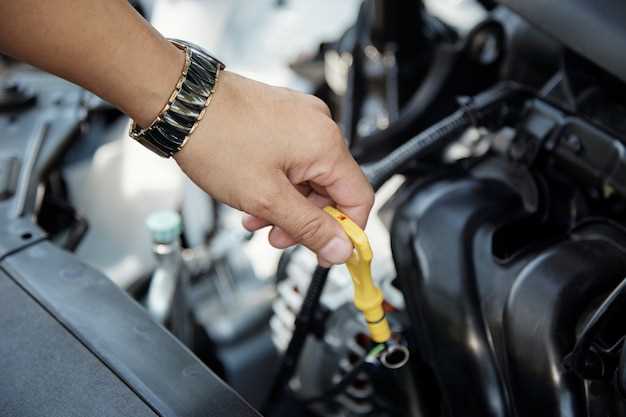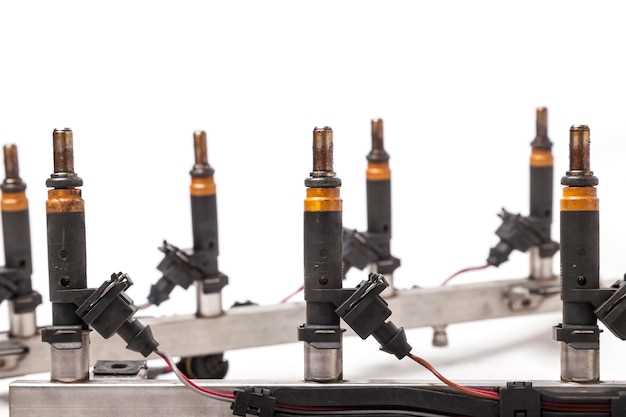DIY Guide to Changing Audi Spark Plugs

Replacing spark plugs in your Audi is a crucial maintenance task that can significantly enhance your vehicle’s performance. By ensuring that these essential components are in good condition, you provide your engine with the care it needs for optimal efficiency. Understanding the process can save you both time and money, allowing for a rewarding self-service experience that many car enthusiasts cherish.
In this guide, we will walk you through the step-by-step procedure for replacing spark plugs in your Audi. Whether you’re a seasoned DIYer or a car maintenance novice, the instructions provided here are designed to be clear and straightforward. With the right tools and a little patience, you’ll find that changing spark plugs can be an achievable task.
It’s important to remember that spark plugs play a vital role in igniting the air-fuel mixture within your engine’s cylinders. Over time, these (often overlooked) components can wear out, leading to decreased performance and fuel efficiency. By replacing them regularly and with care, you’ll not only improve your Audi’s responsiveness but also extend its lifespan. Let’s dive into the specifics of the process and ensure your vehicle runs at its best.
Gathering Necessary Tools and Materials for Spark Plug Replacement
To replace spark plugs in your Audi, it’s essential to gather the right tools and materials beforehand. This ensures a smooth and efficient process, and it helps to prevent any unnecessary complications.
First and foremost, you will need a spark plug socket, typically 5/8 inch or 13/16 inch, depending on your specific engine model. This tool is crucial for securely gripping the spark plugs while you remove them. A ratchet wrench with an extension bar will provide the necessary leverage, making it easier to access plugs positioned in tight spaces.
A torque wrench is also vital for reinstallation. Proper torque is necessary to ensure that the plugs are secured adequately without being over-tightened, which can cause damage. Consult your vehicle’s manual for the correct torque specifications.
Additionally, you should have a set of electrical gloves and safety glasses for personal protection. Working with spark plugs involves dealing with electrical components, so taking care is essential to ensure safety while performing the task.
Next, a gap gauge is important for measuring the distance between the electrodes of the new spark plugs. Ensuring this gap is correct is crucial for optimal engine performance.
Don’t forget to prepare dielectric grease, which can be applied to the boots of the ignition cables or coils. This grease helps create a better seal and prevents moisture ingress, enhancing the longevity of your plugs and the entire ignition system.
Finally, have a clean cloth handy to wipe any debris and oil from the surrounding area before and after the spark plug replacement. Maintaining a clean workspace will help protect your engine and ensure that no foreign materials enter the combustion chamber.
By gathering these tools and materials, you’ll be well-prepared to replace the spark plugs in your Audi effectively and with care.
Identifying the Right Spark Plugs for Your Audi Model

Choosing the correct spark plugs for your Audi is essential for optimal engine performance and efficiency. Each Audi model has specific spark plug requirements based on its engine type and design. Understanding these requirements will help you select the right components, ensuring your vehicle runs smoothly.
To identify the appropriate spark plugs for your Audi, consider the following factors:
| Factor | Description |
|---|---|
| Model Year | Your Audi’s model year can influence the type of spark plugs needed due to changes in engine technology. |
| Engine Type | Different engines (e.g., turbocharged vs. naturally aspirated) may require specific spark plugs designed to withstand varying temperatures and pressures. |
| OEM Specifications | Refer to Audi’s original equipment manufacturer (OEM) specifications for the spark plugs to ensure compatibility and performance standards. |
| Heat Range | The heat range indicates how well the spark plugs can dissipate heat. Selecting the right heat range is crucial for avoiding engine knocking or misfires. |
| Material | Spark plugs are made from different materials such as copper, platinum, or iridium. Higher-quality materials typically provide better performance and longevity. |
To ensure you are using the correct spark plugs, consult your owner’s manual or a trusted automotive parts store. Taking time to care for these components will enhance your Audi’s efficiency and prolong its lifespan.
Preparing Your Audi Engine for Spark Plug Replacement
Before replacing the spark plugs in your Audi engine, it’s essential to prepare adequately to ensure a smooth and effective process. Proper preparation minimizes the risk of damage and helps achieve optimal performance after the replacement.
Follow these steps to prepare your Audi engine:
-
Gather Necessary Tools and Materials:
- New spark plugs compatible with your Audi model
- Socket wrench set
- Torque wrench
- Spark plug gap tool
- Ratchet extension
- Dielectric grease
- Clean cloth or shop towels
-
Ensure Engine is Cool:
Before beginning, make sure your engine has cooled down completely to avoid burns and allow for easier handling of components.
-
Disconnect the Battery:
To prevent electrical shorts or accidental engine starts, disconnect the negative terminal of the battery.
-
Remove Engine Cover (if applicable):
Check if your Audi model has an engine cover that needs to be removed. Utilize the appropriate tools to unscrew and carefully lift it off.
-
Locate the Spark Plugs:
Identify the location of the spark plugs in your engine. Typically, they are situated on the cylinder head, linked to the ignition coils.
-
Inspect Surrounding Area:
Before removing old spark plugs, clean any debris or dirt around the spark plug wells using a clean cloth. This helps prevent contamination during the replacement process.
By following these preparation steps, you’ll set the stage for a successful spark plug replacement, allowing your Audi engine to perform at its best. Ensure all components are properly tightened and connected after replacement to maintain optimal engine efficiency.
Step-by-Step Guide to Removing Old Spark Plugs

Begin by ensuring the engine is cool to avoid burns. Disconnect the battery’s negative terminal to eliminate any electrical hazards. Next, locate the spark plugs; they are usually found on the engine block, secured under the ignition coils or spark plug wires.
Carefully remove the ignition coils or spark plug wires, ensuring you label them if necessary for correct reinstallation. Use a ratchet and the appropriate socket size to loosen the spark plugs. Turn the ratchet counterclockwise while applying firm pressure to break the initial seal.
Once loose, continue turning by hand to remove the plugs completely. Inspect each old spark plug for wear or damage; this can provide insight into engine performance issues. It’s important to keep the workspace clean to prevent debris from entering the engine while removing the plugs.
After removal, ensure no remnants of the old plugs are left in the engine. A compressed air canister can help clear out any debris that may have fallen into the spark plug holes. Finally, keep the removed plugs together for reference before proceeding to install the new ones.
Installing New Spark Plugs: Best Practices and Tips
When installing new spark plugs, it’s essential to handle each component with care to ensure optimal performance. Begin by selecting the correct type of plugs for your Audi; consult your owner’s manual for specifications regarding size and heat range.
Before installation, clean the spark plug holes in the engine cylinder head. Use a soft brush or compressed air to remove any dirt or debris. This prevents contaminants from entering the engine, which could lead to damage.
Check the gap on each new spark plug before installation. The gap should match the specifications provided by the manufacturer. Use a gap tool to adjust if necessary, as an improper gap can affect ignition and overall engine performance.
Apply a small amount of anti-seize compound to the threads of the spark plugs. This will help facilitate easier removal in the future and prevent seizing due to corrosion. Be cautious not to apply it to the electrode or the insulator, as this could interfere with spark generation.
When inserting the plugs, always hand-thread them to avoid cross-threading, which can damage the threads in the engine. Once hand-tight, use a torque wrench to tighten them to the manufacturer’s specified torque value. This ensures a secure fit without over-tightening, which could cause cracking or damage.
Finally, connect the ignition wires or coils back to the new spark plugs, ensuring they are firmly attached. Checking for proper alignment and securing all connections is vital to prevent misfires and ensure efficient engine performance.
Testing Engine Performance After Spark Plug Replacement
After replacing the spark plugs in your Audi, it is essential to assess the engine’s performance to ensure the replacement was successful and that the vehicle is running efficiently. Testing engine performance can reveal improvements in fuel efficiency, acceleration, and overall responsiveness.
Start by taking your Audi for a test drive in a safe area. Pay close attention to how the engine responds during acceleration. A well-functioning engine should provide a smooth and powerful response when you press the accelerator. If you notice any hesitation or misfiring, it may indicate that the spark plugs were not installed correctly or that other issues exist.
Additionally, monitor the fuel efficiency. After a few days of driving, note the fuel consumption compared to your previous figures. An improvement in miles per gallon (MPG) can signify that the new plugs are working effectively, ensuring optimal combustion within the engine.
Another way to test engine performance is by using an OBD-II scanner. This tool can help you check for any diagnostic trouble codes (DTCs) that might indicate underlying issues. If your vehicle’s onboard computer detects any irregularities, it is important to address them promptly to maintain engine health.
Finally, pay attention to engine idle quality. After replacing the plugs, the engine should idle smoothly without any fluctuations or roughness. If any abnormal vibrations or noises are present, further investigation may be necessary.
In conclusion, taking the time to care for your Audi after spark plug replacement is vital for ensuring optimal performance. By closely monitoring driving feedback, fuel efficiency, and utilizing diagnostic tools, you can confirm that the new spark plugs are enhancing engine performance effectively.




